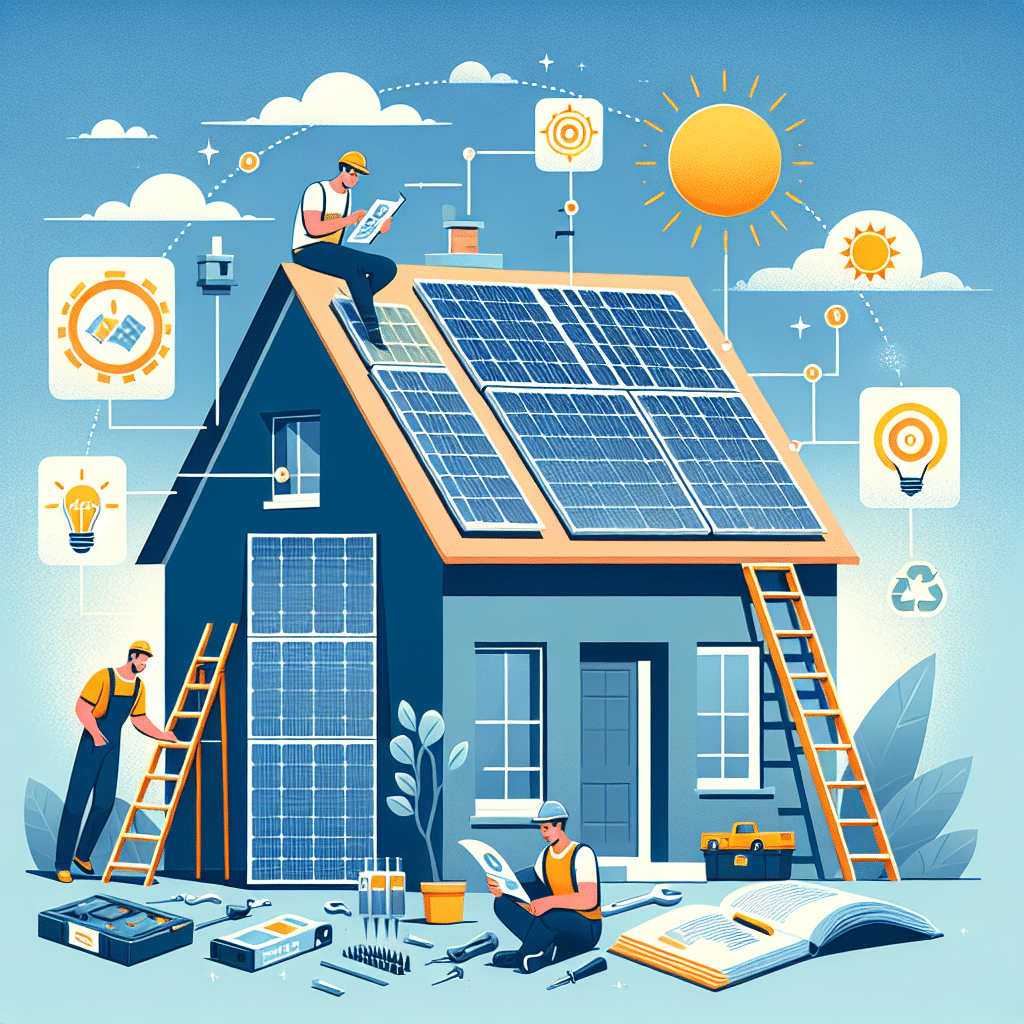Understanding Solar Energy Basics
Solar energy harnesses sunlight and converts it into electricity, offering a renewable solution to power needs. Understanding the fundamental concepts of solar panels is crucial for beginners. Solar panels consist of photovoltaic (PV) cells that convert sunlight into direct current (DC) electricity. An inverter then transforms this DC into alternating current (AC), the type used by household appliances. By grasping these basic components, you can better appreciate the DIY solar setup process.
Assessing Your Energy Needs
Before deciding on the size and type of solar panel system, assess your energy consumption. Gather your electricity bills for at least six months and calculate your average monthly usage. This figure, measured in kilowatt-hours (kWh), will help you determine how many panels you need. For example, if your monthly consumption is 900 kWh, an average solar panel can produce about 300-350 kWh monthly, guiding your system size.
Choosing the Right Solar Panels
When selecting solar panels for a DIY setup, there are various types available:
- Monocrystalline Panels: Made from a single crystal structure, these panels are efficient and space-saving.
- Polycrystalline Panels: Composed of multiple crystal structures, they are generally less expensive but slightly less efficient.
- Thin-Film Panels: Flexible and lightweight, these panels are ideal for unconventional surfaces but may require more space for installation.
Your choice should balance efficiency, cost, and available installation space.
Understanding Solar Inverters
The inverter is a critical component of any solar setup. You can choose from three main types:
- String Inverters: Ideal for residential settings, connecting multiple panels in series but can lead to energy loss if one panel is shaded.
- Microinverters: Placed on each panel, they maximize energy production by optimizing output individually.
- Power Optimizers: Used with string inverters, they enhance performance through panel-level optimization.
For beginners, microinverters may offer ease of installation and flexibility, particularly in shaded areas.
Calculating Energy Production
To estimate potential energy production, consider factors like geographical location, roof orientation, and tilt angle. Use solar calculators available online for accurate estimation. A general rule is that 1 kW of solar panels typically produces about 1,500 kWh per year; adjust this based on local sunlight conditions.
Permitting and Regulations
Before starting your DIY solar project, check local regulations, building codes, and permitting requirements. Some areas provide incentives or rebates for solar installations, while others may have restrictions on how and where solar panels can be installed.
Selecting Mounting Options
Decide on a mounting system based on your roof type:
- Fixed Roof Mounts: Commonly used, they attach directly to the roof structure.
- Adjustable Mounts: Allow for seasonal adjustments to maximize sun exposure.
- Ground Mounts: Perfect for properties with ample land, offering flexibility on tilt and orientation.
Ensure your chosen mount system is compatible with your roof type and local weather conditions.
Gathering Your Equipment
A typical DIY solar panel setup includes the following equipment:
- Solar Panels: According to your energy needs.
- Solar Inverter: Choose one that meets your specifications.
- Mounting Hardware: Ensure compatibility with your roof or ground installation.
- Wiring and Connectors: Use durable materials designed for outdoor use.
- Battery Storage (if desired): To store excess energy for use at night or during cloudy days.
Safety Precautions
Safety is paramount during installation. Always wear protective gear, including gloves and safety goggles. Shut off the main electrical supply before handling electrical components. If you are uncomfortable with any part of the installation process, consider hiring a professional.
Installation Steps
- Plan Your Layout: Create a diagram of your solar panel layout. Mark the placement based on sunlight exposure and shading factors.
- Install Mounting System: Secure mounts according to the manufacturer’s instructions. Ensure they are level and stable.
- Attach Solar Panels: Connect panels to the mounting system, ensuring they’re securely fastened.
- Connect Wiring: Follow wiring diagrams closely. Connect panels to the inverter, and ensure all wiring is weatherproof.
- Install the Inverter: Mount the inverter in a shaded, cool area to avoid overheating during operation.
- Connect to Electrical System: Connect the inverter to your home’s electrical panel. It’s advisable to consult a professional if you are not well-versed in electrical systems.
- Test Your System: Once everything is connected, turn on the system and monitor output. Check for any issues immediately.
Monitoring and Maintenance
Regular monitoring ensures your solar panel system operates efficiently. Many inverters come with monitoring apps or features, allowing real-time performance tracking. Perform maintenance checks every six months; clean the panels, check for damage, and ensure that all connections are secure.
Cost Considerations
Budgeting for a DIY solar project involves initial costs for equipment and potential ongoing maintenance. However, consider the long-term savings on electricity bills and the potential increase in property value to evaluate the investment’s viability.
Exploring Incentives and Rebates
Many regions offer financial incentives for solar installation, including tax credits, rebates, and grants. Research local/state initiatives to maximize your project’s financial benefits.
Community Resources
Joining a local solar energy group or forum can provide invaluable support and resources. Engaging with the community allows you to share experiences, seek advice, and find potential collaborators for your DIY project.
Future Expansion Opportunities
As you grow more comfortable with your solar system, consider options for expansion. Additional panels, battery storage solutions, or integrating smart home technology can enhance your solar setup, further increasing efficiency and savings.
Sustainability Practices
Implementing a DIY solar energy system aligns with sustainable living practices. Ensure your system minimizes waste and promotes efficiency. Opt for durable materials and consider recycling old solar panels whenever possible.
By taking the time to plan, research, and implement these tips, you’ll be well on your way to successfully creating your DIY solar panel system. Embrace the journey toward harnessing solar energy, contributing to a more sustainable future while enjoying the benefits of reduced energy costs.
